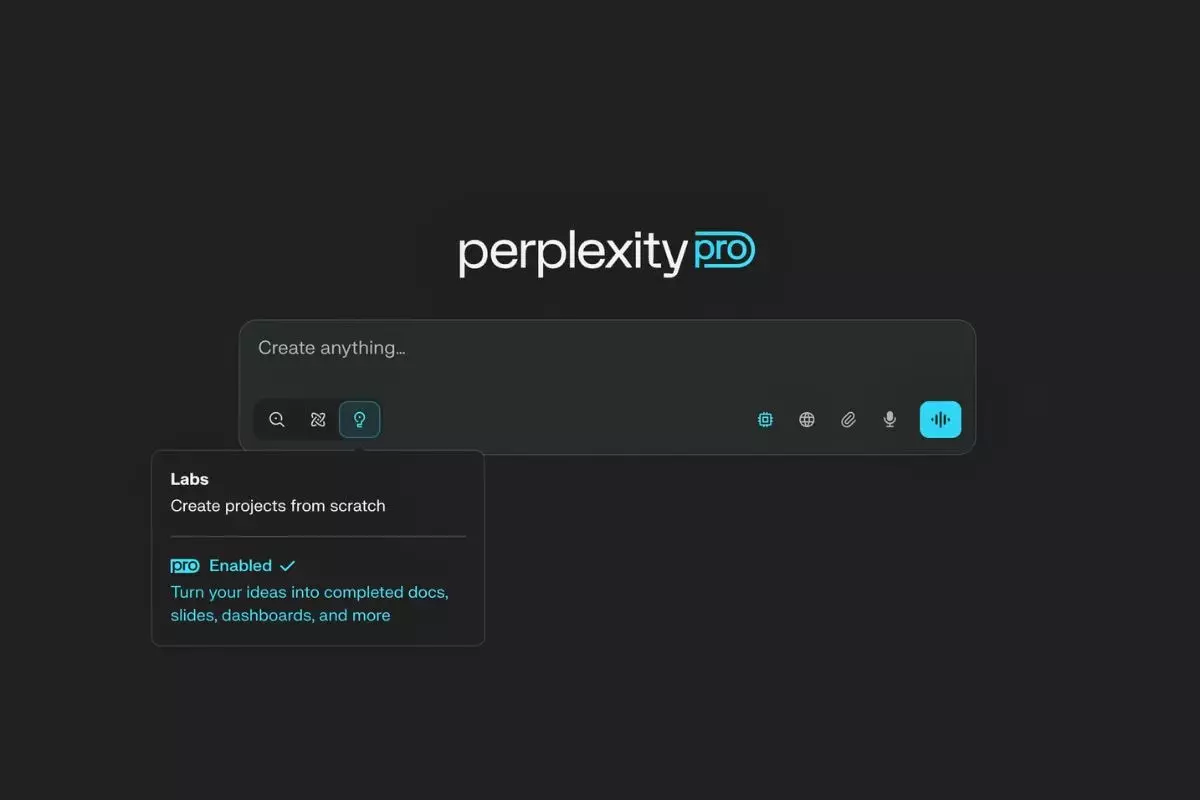In an era where information overload is the norm, the introduction of Perplexity Labs marks a striking turning point in the landscape of artificial intelligence. Launched recently within the Perplexity platform, this innovative feature offers a suite of capabilities previously considered the stuff of dreams: transforming basic text prompts into comprehensive projects, such as detailed reports, interactive web apps, and even complex spreadsheets. Perplexity Labs boldly pushes the boundaries of what AI can achieve, positioning itself as an invaluable asset in workflows that require deep levels of understanding and execution.
It’s exhilarating to witness technology embarking on enhanced tasks that were, until now, far removed from conventional capabilities. The ideal of automating creative processes and complex analyses is rapidly becoming a reality. Yet, beneath this enthusiasm lies a critical question that needs addressing: does this technological leap empower users, or does it risk replacing the human element of creativity and judgment?
Power and Risks of Deep Web Browsing
Perplexity Labs harnesses deep web browsing and code execution to unfurl a landscape rich with possibilities. However, while the advancements are exciting, there is an undeniable complexity that warrants scrutiny. The concept of allowing an AI to delve into the unregulated depths of the internet raises ethical considerations. Users have a right to question the mechanisms that not only empower but also govern this tool. How prevalent are the risks of misinformation or manipulation when the AI is navigating through layers of unverified content?
Moreover, the potential for creating multi-agent workflows remains ambiguous. The introduction of agentic tools, while theoretically elevating productivity, risks oversimplifying intricate tasks that require nuanced decision-making—a realm where human insight thrives. By blurring the lines between human input and machine execution, we may inadvertently diminish the beauty of the creative process. However, one cannot deny the allure of delegating mundane tasks to an adept AI, freeing human minds for more profound, innovative exploration.
Creative Freedom vs. Algorithmic Precision
The allure of Perplexity Labs lies in its promise to streamline the creative workflow. By generating trades around stocks, formulating visual storyboards, or crafting data visualizations, the feature holds immense potential for diverse user bases from investors to filmmakers. Nevertheless, the crux of the matter remains—are we sacrificing the intricacies of human creativity at the altar of algorithmic precision?
There exists a delicate tension between expanding our creative toolkit and succumbing to the allure of convenience. Users may find themselves overly reliant on AI-generated outputs without applying critical analysis or personal flair. While Perplexity’s capabilities to execute tasks independent of human oversight offer enormous efficiency, this might precipitate a decline in the value placed on the uniquely human perspectives that foster genuine innovation.
The Role of Clarity Amidst Complexity
What remains unclear is the extent to which users can interact with Perplexity Labs during the execution of tasks. The notion of ‘self-supervised’ workflows seems powerful, yet the ambiguity surrounding user intervention raises concerns. Can individuals adapt the AI’s output mid-process, or will they be subject to an automated monologue that might stray from their original intention? Such limitations could render the user experience frustratingly static, undermining the adaptability that true creativity often requires.
Moreover, there is a palpable absence in the discourse surrounding the potential societal implications of such tools. If we increasingly lean on AI to synthesize research, develop narratives, or generate market strategies, what does this imply for skills like critical thinking, empathy, and original thought? We may find ourselves facing a paradox where technology purportedly enriches our creativity yet simultaneously dulls the instincts we’ve cultivated over generations.
Ultimately, the emergence of Perplexity Labs serves as a powerful reminder of the dual-edged nature of progress. As users, we stand on the precipice of enhanced capability, yet we must tread carefully. The Augmented Intelligence movement, spearheaded by tools like Perplexity Labs, carries within it the promise of alleviating mundane complexities; yet, we must not lose sight of the quintessential arts of human creativity. The innovations in AI can be harnessed wisely—if balanced with a commitment to maintain the irreplaceable human touch. Thus, as the worlds of technology and creativity become increasingly intertwined, we ought to strive for progress that enhances rather than diminishes our innate potential.

Leave a Reply